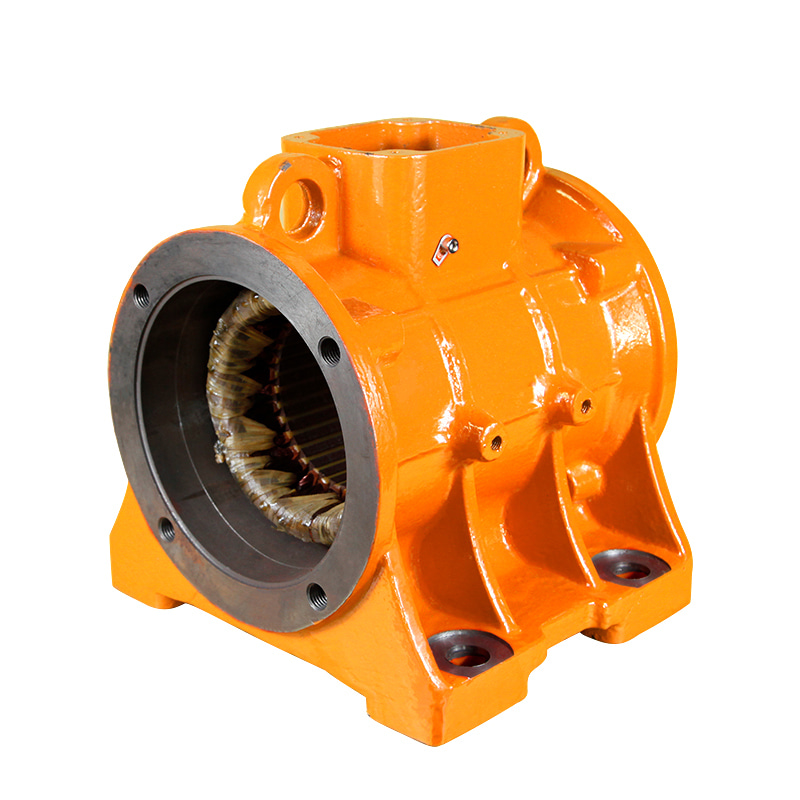The Three Phase 4 Poles Industrial Vibration Motor plays a critical role in numerous industrial applications, particularly in machinery involved in vibrating screens, feeders, conveyors, and other material handling equipment. Known for their reliability and efficiency, these motors require consistent and methodical maintenance to ensure good performance and longevity. As industrial operations increasingly rely on automation and continuous production, understanding the maintenance methods for the Three Phase 4 Poles Industrial Vibration Motor has become more crucial than ever.
Routine Inspection
One of the foundational maintenance practices for the Three Phase 4 Poles Industrial Vibration Motor is routine inspection. Regular visual checks should be conducted to identify signs of wear, such as loose bolts, cracked housing, or degraded cable insulation. Operators should inspect the mounting bolts and ensure that the motor is securely fastened to the base frame to prevent misalignment and operational inefficiencies.
Additionally, the motor’s vibration levels should be periodically measured using vibration analyzers. Any abnormal increase in vibration can indicate imbalanced loads, worn bearings, or misalignment. By tracking these levels over time, maintenance teams can proactively address issues before they escalate into costly failures.
Lubrication: Preventing Premature Wear
Proper lubrication is essential for the bearings in the Three Phase 4 Poles Industrial Vibration Motor. Depending on the operational environment and load, bearings may need to be lubricated every 1,000 to 2,000 operating hours. Over-lubrication and under-lubrication are both detrimental; thus, manufacturers’ guidelines should be followed closely.
The type of lubricant used also plays a significant role. High-quality, industrial-grade greases that withstand high temperatures and resist contamination should be good. During each lubrication cycle, old grease must be purged properly to prevent clogging and overheating.
Electrical Maintenance: Ensuring Operational Integrity
Electrical integrity is vital for the performance of the Three Phase 4 Poles Industrial Vibration Motor. Periodic checks of the insulation resistance using a megohmmeter can reveal deteriorating insulation before it causes electrical faults. Additionally, terminals should be examined for corrosion, tightness, and signs of overheating.
Monitoring the power supply and ensuring that voltage and current remain within specified limits is another critical step. Any imbalance in the three-phase supply can cause the motor to overheat, potentially resulting in motor winding damage.

Cleaning and Environmental Control
Keeping the Three Phase 4 Poles Industrial Vibration Motor clean is often overlooked but significantly affects its performance. Dust, debris, and moisture can accumulate on the motor housing, cooling fins, and electrical terminals, reducing heat dissipation and increasing the risk of short circuits.
In dusty environments, motors should be cleaned weekly using dry air pressure or vacuum systems. For motors operating in moist or corrosive conditions, applying protective coatings or using weather-resistant enclosures can greatly extend operational life.
Vibration Motor Alignment and Balancing
Alignment and balance are key factors in the longevity of the Three Phase 4 Poles Industrial Vibration Motor. Misalignment can result in uneven wear on the motor shaft and bearings, while an unbalanced motor may transmit excess vibration to the machinery, causing structural damage over time.
Using laser alignment tools and dynamic balancing equipment ensures that the motor operates smoothly and within design parameters. Such precision tools are essential in industries where downtime costs are high and reliability is non-negotiable.
Record Keeping and Predictive Maintenance
Documenting maintenance activities and motor performance data is vital. Maintenance logs should include details about inspections, replacements, lubrication, electrical tests, and operational anomalies. This historical data allows maintenance managers to implement predictive maintenance strategies, using trend analysis to forecast potential failures.
Predictive maintenance tools like thermal imaging cameras, vibration sensors, and IoT-enabled monitoring systems can be integrated into the motor system. These technologies offer real-time diagnostics and alerts, allowing for timely intervention before mechanical issues disrupt operations.

 英语
英语 葡萄牙语
葡萄牙语 西班牙语
西班牙语 русский
русский






 Tel: + 86-576-86320988
Tel: + 86-576-86320988
 Fax: + 86-576-86333217
Fax: + 86-576-86333217
 E-mail:
E-mail:  Add: Dayangcheng Industrial Zone, daxi, wenling, zhejiang, china
Add: Dayangcheng Industrial Zone, daxi, wenling, zhejiang, china
